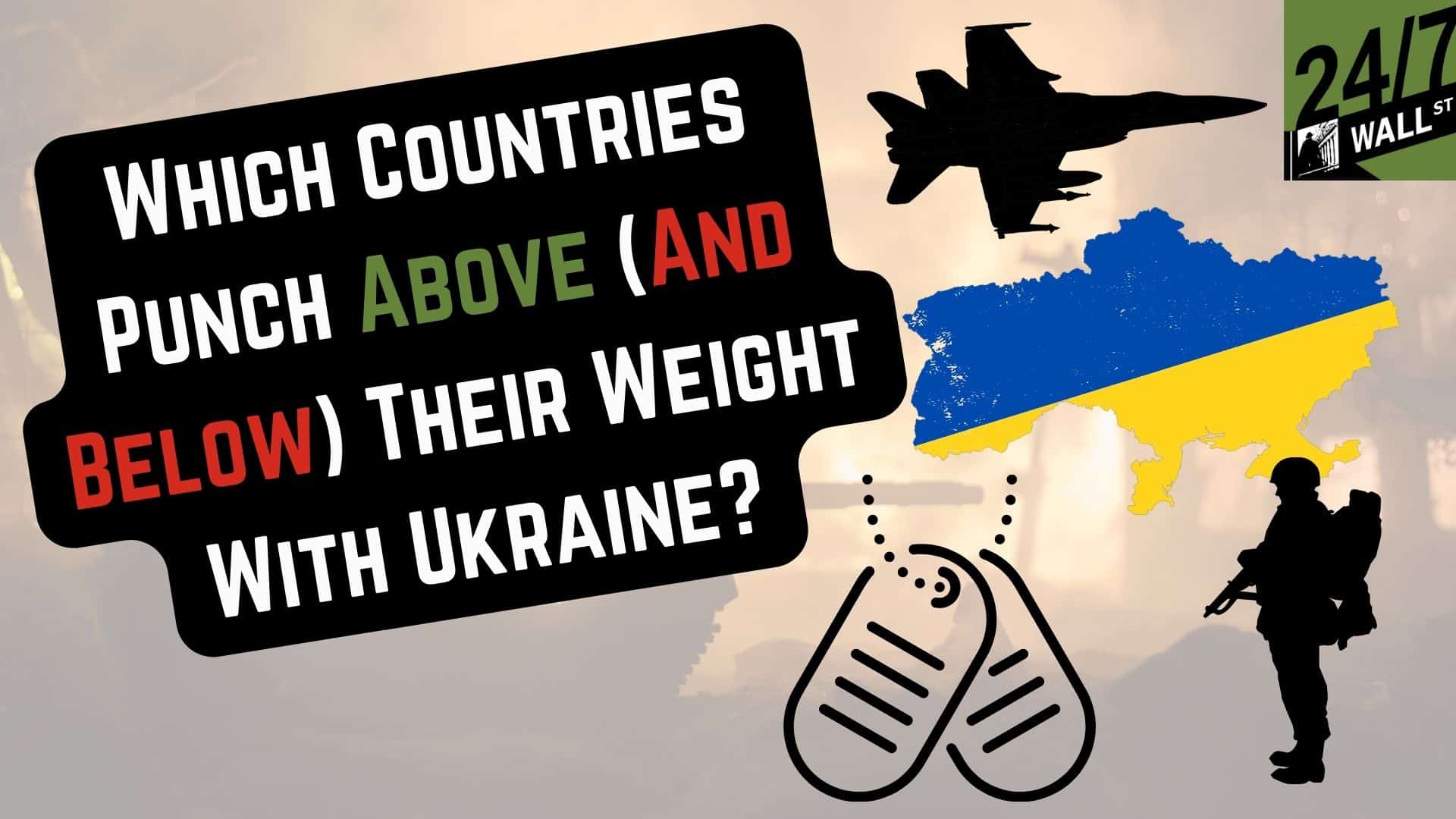Investing
Which Countries Punch Above (And Below) Their Weight With Ukraine?

Published:

Multiple Allies, But Which Do The Most?
This conversation with Michael Muir and Austin Smith explores the contributions of various countries in supplying military equipment to Ukraine. Estonia and the Baltic states, due to their own historical experiences, have provided significant support relative to their GDP. Poland and other former Warsaw Pact countries have supplied old Soviet weapons, which are familiar to Ukrainian forces, while Western countries are providing newer equipment like the F-16s, though with some operational challenges.
Investors Have to Plan for What’s Ahead
With so much turmoil and uncertainty, it’s easy to forget that there are mega trends brewing that could make investors fabulously rich. The few who are looking ahead to the future are placing their bets, and the most promising opportunity by far is AI. That’s why we penned a 38 page research report titled ‘the next Nvidia’ revealing our top three AI picks for the years ahead. For a limited time you can access the report, completely free, simply by clicking here.
Transcript:
So if we can look back to some of the gear that’s been provided, that’s also pretty interesting to look at.
I’d love to talk about that.
And could we frame maybe some of the equipment that’s been provided to Ukraine in the context of which nations are contributing the most, which are sort of punching above their weight, and which nations are contributing the least and really not delivering enough that the Ukrainians would like?
Yeah.
So if we’re talking about just, I guess, in boxing terms, it’s called like a pound for pound world champion.
If that was in Ukraine aid, then it’s Estonia by far.
The Baltic countries, I guess, from just their own experience of being part of the Soviet Union really distancing themselves and joining NATO, I guess they feel the need to provide a huge amount of support.
And obviously they’re in the vicinity in terms of taking in refugees, in terms of providing whatever military support they can, or just as in terms of a percentage of their GDP, the Baltic states are far and away the biggest supporters of Ukraine with the means they have.
Another key supporter, at least in the early stages of the conflict, is Poland.
And as I touched on earlier, one of the great advantages of these former Warsaw Pact countries is they have large stockpiles of old Soviet Union weapons that the Ukrainian army is very familiar with, knows how to use, knows how to maintain.
So getting all the latest gear from Western countries is great, but there’s a lot of problems with those weapon systems as they’re less familiar.
Maintaining them is difficult.
And if you’re in a pinch, you don’t have the time to wait to train to use certain things.
You need to have something that’s on hand and ready to go and defend yourself with.
So some examples of gear that Poland and the Czech Republic and Slovakia, among others, have provided is T-72 tanks.
These are not cutting edge but they’re fairly reliable and again Ukraine is very familiar with them.
They’ve sent hundreds.
Poland sent a great deal of these.
MiG-29 jets.
One of their great limiting factors again these are not cutting edge by any means but one of the main limitations of the MiG-29 is it has very short operational range, but when you’re fighting a defensive war, that doesn’t particularly matter.
So these weapons are far from the newest, the latest and greatest that are available, but they’ve been pretty useful.
So we’re seeing these old Soviet weapons kind of holding the line, if you will, and then newer gear is coming from the West.
Just this summer, the F-16 was promised a long time ago, and it’s just finally starting to be delivered.
So there’s difficulties.
And the delays were partly caused by some concerns about how they would be used.
So some countries don’t want their hardware being used to strike Russian territory for fear of escalation.
So they can only be used defensively.
So there’s one part of the delay is just getting that agreement that they’ll only be used within Ukrainian airspace.
Second part, again, is training.
Just because you can fly older Soviet era aircraft doesn’t mean you’re going to be adapted to an F-16 and then just getting the maintenance in place as well.
That was another problem with all of German self-propelled artillery as they just ran into severe maintenance problems.
Start by taking a quick retirement quiz from SmartAsset that will match you with up to 3 financial advisors that serve your area and beyond in 5 minutes, or less.
Each advisor has been vetted by SmartAsset and is held to a fiduciary standard to act in your best interests.
Here’s how it works:
1. Answer SmartAsset advisor match quiz
2. Review your pre-screened matches at your leisure. Check out the advisors’ profiles.
3. Speak with advisors at no cost to you. Have an introductory call on the phone or introduction in person and choose whom to work with in the future
Get started right here.
Thank you for reading! Have some feedback for us?
Contact the 24/7 Wall St. editorial team.